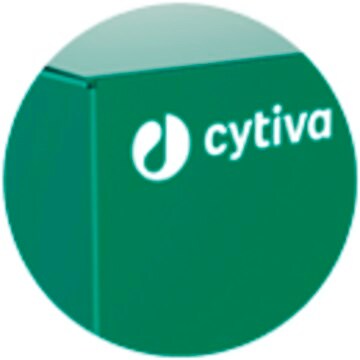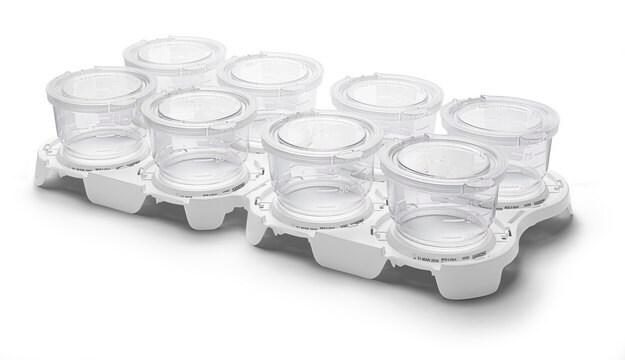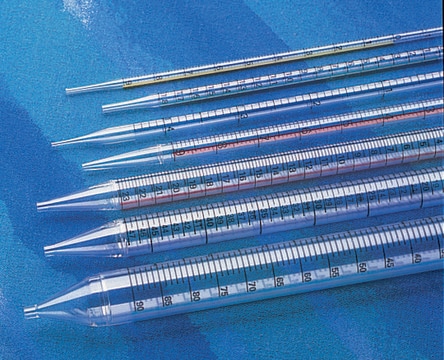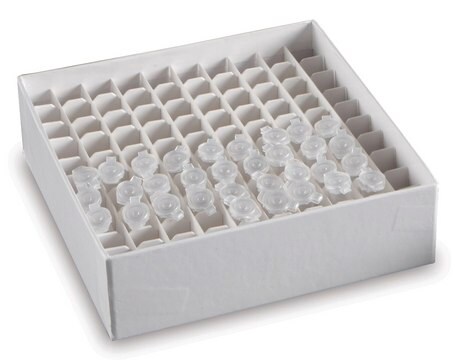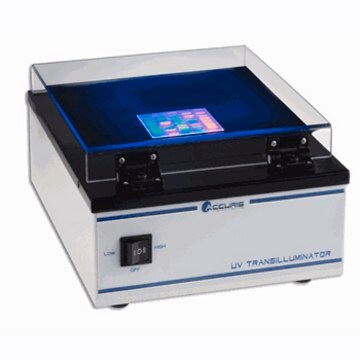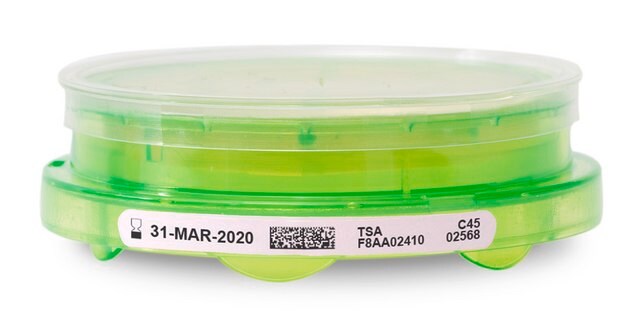GE28-9564-78
GE Storage Phosphor Screens
BAS-IP SR 2025 E, super resolution, size 20 cm × 25 cm
Zaloguj sięWyświetlanie cen organizacyjnych i kontraktowych
About This Item
Kod UNSPSC:
41105300
NACRES:
NB.22
Polecane produkty
opakowanie
pkg of 1 ea
producent / nazwa handlowa
Cytiva 28-9564-78
dostępność
not available in Japan
rozmiar
20 cm × 25 cm
Szukasz podobnych produktów? Odwiedź Przewodnik dotyczący porównywania produktów
Opis ogólny
BAS Storage Phosphor Screens for use with phosphorimager systems are a faster and more sensitive alternative to autoradiography.
Broad application range: suitable for 3H, 125I, 14C, 32P, 33P, 35S and more
Storage phosphor screens capture latent images produced by ionizing radiation, including X-rays, β particles emitted from radioisotopes commonly used in research (e.g. 3H, 14C, 32P, 33P, and 35S), and γ rays (e.g. from 125I, 131I, and 99mTC). Upon laser-induced stimulation, light is emitted from the storage phosphor screen in proportion to the amount of radioactivity in the sample. The resulting digital image allows for quantitation of subtle signal intensity differences over a wide dynamic range using a storage phosphorimager system (e.g. Typhoon, Storm, or PhosphorImager) together with analysis software such as ImageQuant. Typically, 50% to 90% less exposure time is required compared with an equivalent exposure to conventional autoradiography film. Publication quality images are often obtained in a single exposure.
How storage phosphor screens work
A storage phosphor screen is a film-like sensor designed to trap and store radiation energy in a stable state. BAS Storage Phosphor Screens contain a photostimulable layer of phosphor particles (BaFBr) sandwiched between a protective layer and a support film coated with trace amounts of bivalent europium (Eu2+) as a luminescence center. Particles in the phosphor layer stably absorb ionizing radiation, which is later released as blue-violet light (400nm) upon laser stimulation in a storage phosphorimager system. Storage phosphor screens are reusable* and are not degraded by repeated exposure to laboratory levels of radioactivity. To reuse, simply expose a screen to the extra-bright light of an ImageEraser light box.
Product selection Three types of BAS Storage Phosphor Screen are available to suit differing applications:
Broad application range: suitable for 3H, 125I, 14C, 32P, 33P, 35S and more
Storage phosphor screens capture latent images produced by ionizing radiation, including X-rays, β particles emitted from radioisotopes commonly used in research (e.g. 3H, 14C, 32P, 33P, and 35S), and γ rays (e.g. from 125I, 131I, and 99mTC). Upon laser-induced stimulation, light is emitted from the storage phosphor screen in proportion to the amount of radioactivity in the sample. The resulting digital image allows for quantitation of subtle signal intensity differences over a wide dynamic range using a storage phosphorimager system (e.g. Typhoon, Storm, or PhosphorImager) together with analysis software such as ImageQuant. Typically, 50% to 90% less exposure time is required compared with an equivalent exposure to conventional autoradiography film. Publication quality images are often obtained in a single exposure.
How storage phosphor screens work
A storage phosphor screen is a film-like sensor designed to trap and store radiation energy in a stable state. BAS Storage Phosphor Screens contain a photostimulable layer of phosphor particles (BaFBr) sandwiched between a protective layer and a support film coated with trace amounts of bivalent europium (Eu2+) as a luminescence center. Particles in the phosphor layer stably absorb ionizing radiation, which is later released as blue-violet light (400nm) upon laser stimulation in a storage phosphorimager system. Storage phosphor screens are reusable* and are not degraded by repeated exposure to laboratory levels of radioactivity. To reuse, simply expose a screen to the extra-bright light of an ImageEraser light box.
Product selection Three types of BAS Storage Phosphor Screen are available to suit differing applications:
- Multipurpose Standard (MS) screens: Suitable for use with ionizing radiation from isotopes such as 14C, 125I, 131I, 32P, 35S, and 99mTc. This is the screen of choice for 32P Northerns and Southerns and 125I Western blots and gels.
- Super Resolution (SR) screens: Provide higher resolution where a pixel resolution of 50 μm is required; compatible with storage phosphor imaging systems such as Amersham™ Typhoon™, Typhoon FLA 7000, Typhoon FLA 7000 IP, and Typhoon FLA 9500.
- Tritium (TR) screens: Highly sensitive screens constructed without a protective layer, for detection of the weak energy of 3H emissions. Optimal results are obtained when the tritium signal is on the surface of the sample and available to penetrate the screen. Since these screens lack of protective layer, TR screens are for single-use.
Cechy i korzyści
- Rapid: Typically 50 to 90% less exposure time compared to conventional autoradiography film.
- High sensitivity: Up to 100× more sensitive than autoradiography film, depending on isotope and sample type.
- Wide dynamic range (five orders of magnitude): Visualize and quantify both weak and strong signals in a single exposure.
- Quantitative: Results are digitized using a storage phosphorimager system (e.g., Typhoon, Storm, or PhosphorImager) and accurately quantitated using ImageQuant software.
- Safe and economical: Reusable phosphor screens do not require chemicals, darkroom, or other special treatment for use.
- Convenient: Each step can be performed at the lab bench under normal lighting conditions and at room temperature.
Ta strona może zawierać tekst przetłumaczony maszynowo.
Wybierz jedną z najnowszych wersji:
Certyfikaty analizy (CoA)
Lot/Batch Number
Przepraszamy, ale COA dla tego produktu nie jest aktualnie dostępny online.
Proszę o kontakt, jeśli potrzebna jest pomoc Obsługa Klienta
Masz już ten produkt?
Dokumenty związane z niedawno zakupionymi produktami zostały zamieszczone w Bibliotece dokumentów.
Klienci oglądali również te produkty
Nasz zespół naukowców ma doświadczenie we wszystkich obszarach badań, w tym w naukach przyrodniczych, materiałoznawstwie, syntezie chemicznej, chromatografii, analityce i wielu innych dziedzinach.
Skontaktuj się z zespołem ds. pomocy technicznej